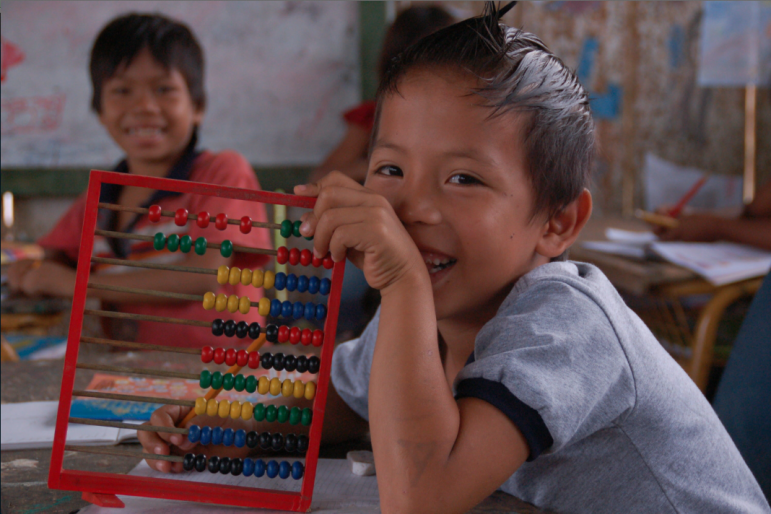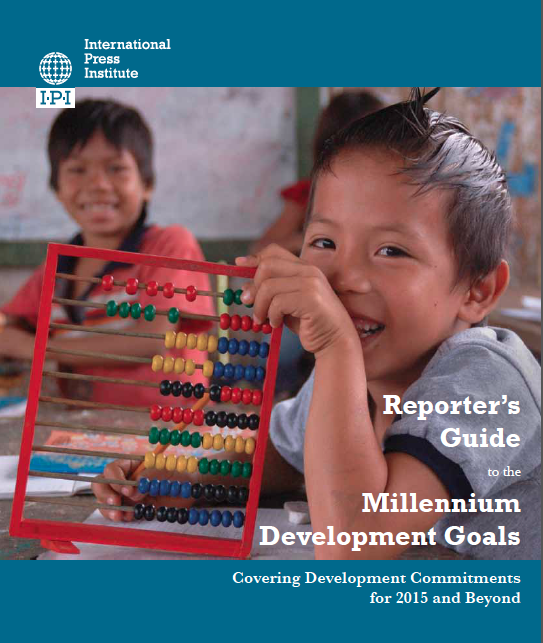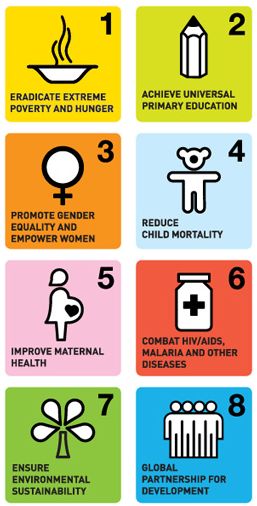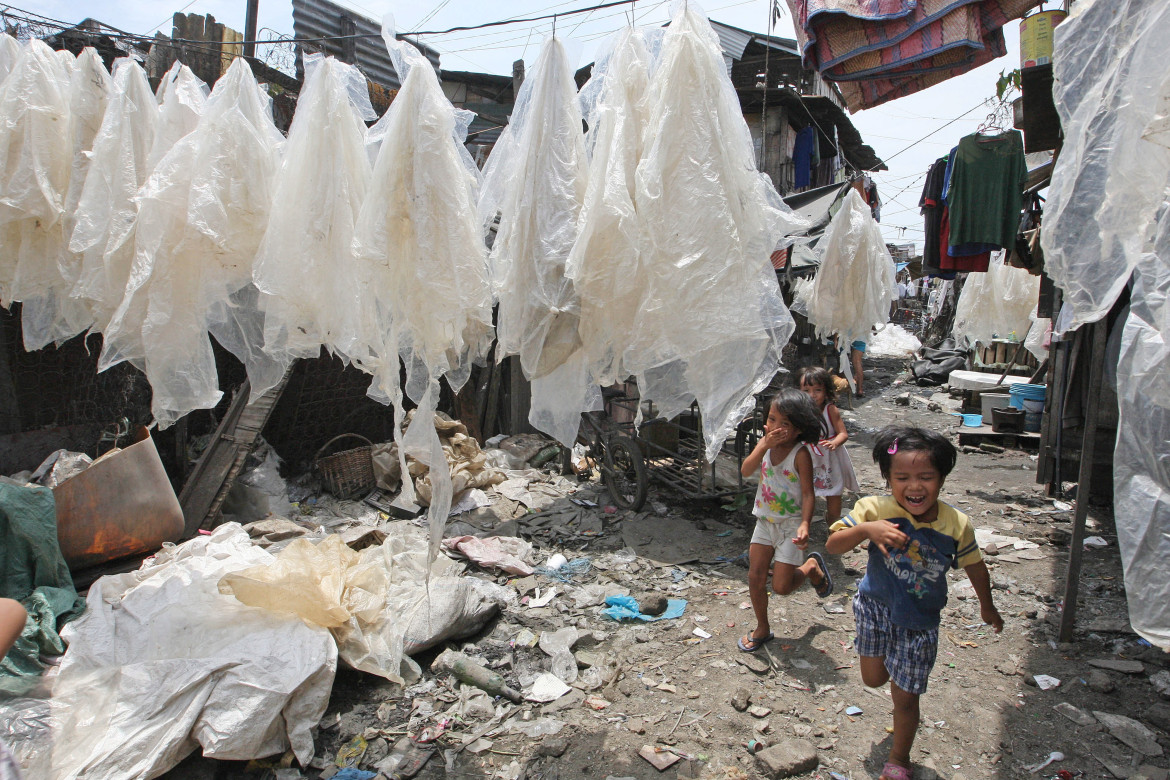

Intro: Reporter’s Guide to Millennium Development Goals
 Editor’s Note: For the next two weeks, GIJN is running a series drawn from the newly released Reporter’s Guide to the Millennium Development Goals: Covering Development Commitments for 2015 and Beyond, published by the International Press Institute. Agreed to in 2000, the UN Millennium Goals comprise an ambitious agenda to improve quality of life around the world, focusing on such issues as poverty, gender equality, and education. This unique manual, available in four languages, offers journalists tips on covering these critical areas as we near the 15th anniversary of the goals. Twenty-one journalists across six continents contributed to the report, including several active in GIJN. We are grateful to the publisher, IPI, for permission to publish the series, and to the European Press Photo Agency and EFE Agency for permission to publish the many striking photos that accompanying the text. Here, then, is part one, an intro by Scott Griffen, IPI’s Press Freedom Adviser for Latin America.
Editor’s Note: For the next two weeks, GIJN is running a series drawn from the newly released Reporter’s Guide to the Millennium Development Goals: Covering Development Commitments for 2015 and Beyond, published by the International Press Institute. Agreed to in 2000, the UN Millennium Goals comprise an ambitious agenda to improve quality of life around the world, focusing on such issues as poverty, gender equality, and education. This unique manual, available in four languages, offers journalists tips on covering these critical areas as we near the 15th anniversary of the goals. Twenty-one journalists across six continents contributed to the report, including several active in GIJN. We are grateful to the publisher, IPI, for permission to publish the series, and to the European Press Photo Agency and EFE Agency for permission to publish the many striking photos that accompanying the text. Here, then, is part one, an intro by Scott Griffen, IPI’s Press Freedom Adviser for Latin America.
Nearly 13 years ago, in a celebration uniting every corner of the Earth, humanity welcomed the start of a new millennium, a singularly momentous occasion that harbored the promise of a better future for all.
In September of that year, the year 2000, an unprecedented number of world leaders gathered for the Millennium Summit in New York City and affirmed their commitment to helping the billions of individuals who lacked life’s most basic needs.
 “We recognise that, in addition to our separate responsibility to our individual societies, we have a collective responsibility to uphold the principles of human dignity, equality and equity at the global level,” leaders and representatives of 189 UN member states acknowledged in the summit’s crowning document: The Millennium Declaration.
“We recognise that, in addition to our separate responsibility to our individual societies, we have a collective responsibility to uphold the principles of human dignity, equality and equity at the global level,” leaders and representatives of 189 UN member states acknowledged in the summit’s crowning document: The Millennium Declaration.
The Declaration took advantage of a rare temporal turning point to establish a set of development priorities for the coming years, including eradicating poverty, safeguarding the natural environment, and protecting society’s most vulnerable members, especially children.
These priorities were, in turn, expanded and transformed into the Millennium Development Goals (MDGs), at once a set of specific, statistically verifiable development objectives and a powerful symbolic commitment to human well-being.
But who was to be responsible for turning these lofty promises into reality, for implementing these well-meant if highly ambitious goals by the target year of 2015? Then-UN-Secretary-General Kofi Annan made clear the answer: all of us. “The issues we are dealing with—from the elimination of poverty to the fight against AIDS and the protection of the environment—are issues that require all hands on deck.”
Indeed, it would be a grave error to think that only governments have the power to further the MDGs. Such a conclusion is an invitation to skepticism, if we reflect that, left to their own devices, government bodies at both the national and international levels may decline to prioritise human and social development—or lose interest in the MDGs altogether.
Filipino children run through plastic bags that have been washed and dried after being recovered from garbage dumps in Manila, The Philippines, Sept. 2010. EPA/Rolex dela Pena
If we consider the complexity and breadth of the goals themselves, it is clear that governments are but one factor in the success of the MDGs. Civil society groups compile statistics and defend the rights of the neglected. Private donors and philanthropists bring critical funds to where they are needed most. Scientists and universities lead research to identify innovative solutions.
And as for the journalists to whom this book is addressed? One could argue—as we do—that they are the most important element of all.
After all, the press has the unique power to bring information, once hidden or ignored, into the public sphere. By highlighting the stories of the incalculable many who still suffer from the aching realities of poverty, disease, and discrimination, journalists sensitize public opinion and remind those who signed their name to the Millennium Declaration how much work there is left to be done.
“In a media environment of increasing competition and shortened attention spans, pieces on the MDGs don’t always sell the most papers or attract the biggest audiences,” noted former New Zealand prime minister and current administrator of the United Nations Development Programme Helen Clark upon awarding a prize for development reporting in Latin America in 2009. “But they do help those who are most in need of a voice—the poor and the vulnerable.”
So while reporting on social issues, compared to political revolutions and financial crises, may not grab reader attention—a point Journalists for Human Rights Director Rachel Pulfer disputes in this book—it does make a difference in working to ensure that no-one is excluded from the Millennium Declaration’s stirring pledge.
When journalists are silent about the MDGs, the impetus for honest action on development withers. Valuable aid falls into the wrong hands, misdirected by corruption. Women and girls remain tethered to and endangered by sexist yet culturally entrenched practices. Researchers develop weapons instead of vaccines. Globally, food production soars while millions of children die from malnourishment. Once-trumpeted deadlines pass by, unnoticed.
A vigilant and socially engaged press helps to hold governments and non-governmental agencies alike accountable to their MDG commitments. Undoubtedly, however, fulfilling the role of development watchdog is not easy. Journalists must be prepared to fight for MDG coverage in the editorial room. They must be willing to travel to the poorest regions to speak with the victims of incomplete promises. They must be ready to take on the corruption and special interests that are stubbornly hindering progress.
But there are some important tools to assist this effort. This handbook is meant to serve as a comprehensive guide for journalists covering human development. There is also a concrete deadline: December 31st, 2015, the target for the fulfilment of the MDGs. Having a specific date on the calendar can help convince editors that now is the time to mobilise coverage.
This handbook also seeks to make journalists who already cover social issues or investigate corruption conscious of the rhetorical power of the MDGs. Indeed, by linking their stories to these internationally recognisable goals, journalists raise the possibility that their stories will catch the attention of those in power—and, just maybe, make a difference.
But this book is also addressed to those reporters who have never thought about covering development before, but who wish for their words to have a lasting impact. With a deadline that the entire planet will be watching, what better time than now to write about something new? Perhaps your media or your country lacks coverage on key development themes such as education, hunger, or climate change. No matter the topic, the personal accounts and expert advice contained here can help the enterprising journalist get started.
We also know that, despite our best efforts, work on the MDGs will not end in three years. Plans are already underway to renew the MDGs for a post-2015 agenda, one that will maintain a focus on the core concerns of the Millennium Declaration while adding new priorities, such as energy access, which are also addressed throughout this book.
The 2012 MDG Progress Report, prepared by the UN Department of Economic and Social Affairs, delivered some encouraging news. Worldwide, extreme poverty—defined as living on less than $1.25 a day—has fallen from 47% in 1990 to 24% in 2008, meeting the first MDG target. Tuberculosis and malaria are on the retreat, and educational parity between girls and boys has been achieved.
Nevertheless, the report emphasised significant shortcomings. The maternal death rate has decreased only slightly. 2.5 billion individuals lack access to proper sanitation facilities. 15.5 % of the global population is undernourished. The number of people living in slums has risen from 650 million to 863 million.
These findings leave no doubt of the challenge ahead. And with 2015 just around the corner, there is little time to wait. So, journalists, grab this book and get started—there’s a deadline to meet.
Originally from Arizona, Scott F. Griffen is Press Freedom Adviser for Latin America and the Caribbean at the International Press Institute (IPI).











